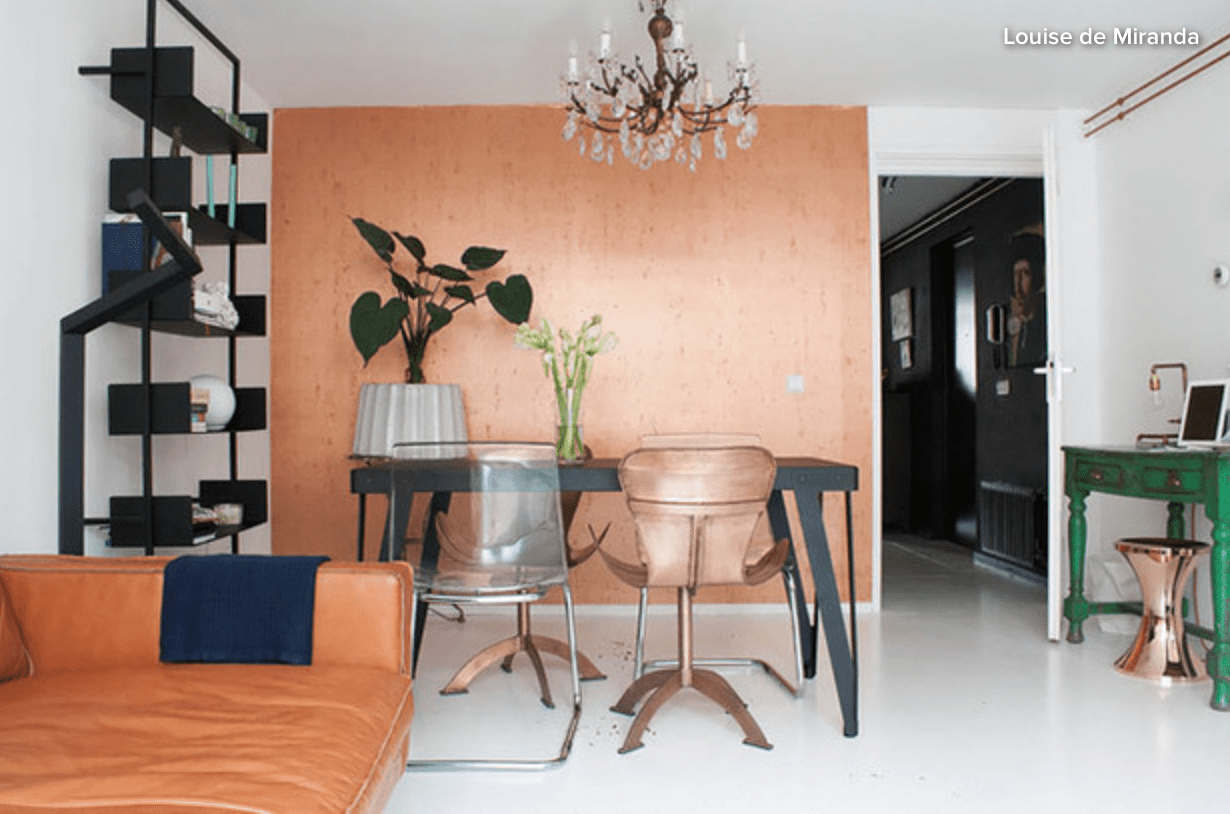
Copper is the Latest Design Craze
It is a nutrient in the human diet, vital to life and is also making its way onto back splashes, upon walls in the form of artwork and is being formed into sinks and vases.
Historically, copper has been used to create coins and jewelry, used in scientific experiments and to form musical instruments. The ancient Greeks and Romans used copper. It has staying power in society. The fact is that copper once adorned the bodies and homes of wealthy ancient peoples. It should come as no surprise that it is experiencing a renaissance in the modern contemporary design world.
Seeing its element symbol of Cu on the periodic table does not denote its beauty, malleability, multiple uses, or the way it can be altered.
In some ways, the use of copper in modern homes is almost wabi sabi in its philosophy and aesthetic. Copper starts off a clean, shiny sheet of camel brown and then, with time, it changes. Its imperfections and the alterations created by air, by the human touch, by time – create a unique genesis of color and beauty.
Tarnish, or patina, that develops on copper is in every respect a chemical reaction with the world that happens over time. As it ages within homes or in the elements, it does what many humans hope for as they age: it develops character.
“There is another term for what happens to coins,” said Saint Jovite Youngblood, an executive working in the collectibles and antiquities market. “The oxidation/color change that occurs on coins is known as toning.”
The patina look on copper is finding its way onto walls as artwork, onto copper bricks that are used to create fireplaces, onto kitchen counters and onto backsplashes.
Companies and do-it-yourselfers are finding ways to expedite the patina process using a variety of household chemicals. In effect, an aquamarine color surfaces from the metal and that perfect blend of rustic beauty is achieved.
Martha Stewart loves her copper pots and pans, and even provides a step-by-step guide to properly cleaning them.
That everyone from ancient civilizations to Martha Stewart have had an appreciation of the metal is – again – not shocking.
What is quite surprising and has really surfaced as a benefit to using copper in home decorating during a pandemic: copper is antimicrobial. That’s right – it self-sterilizes.
“Copper is antimicrobial. Bacteria and viruses die within hours of coming into contact with copper; E.coli, listeria, MRSA, and staphylococcus are killed within minutes. The medical benefits of copper have been known for millennia, in fact, as the Egyptians used copper to sterilize their wounds and their water supply 2,000 years before Jesus,” according to a House Beautiful article.
Fast Company poses a great question: “Copper kills coronavirus. Why aren’t our surfaces covered in it?”
“In China, it was called ‘qi,’ the symbol for health. In Egypt it was called ‘ankh,’ the symbol for eternal life. For the Phoenicians, the reference was synonymous with Aphrodite—the goddess of love and beauty. These ancient civilizations were referring to copper, a material that cultures across the globe have recognized as vital to our health for more than 5,o00 years,” according to the article.
Bacterias, influenzas and superbugs can last for days on other surfaces, but not copper – they begin to die within minutes.
“We’ve seen viruses just blow apart,” Bill Keevil, professor of environmental healthcare at the University of Southampton told Fast Company. “They land on copper and it just degrades them.”
No electricity and no bleach is needed – copper is vital to human life because it causes the quick death of the viruses that seek to harm.
So, backsplashes and artwork should give way to more kitchen counters and sinks as humans once again discover the beauty and life-sustaining properties of copper.
Mark Ligon is the Marketing Manager at a leading e-commerce store in plumbing supply. Mark focus is on DIY projects and providing creative and practical advice to individuals looking to complete DIY projects of their own






